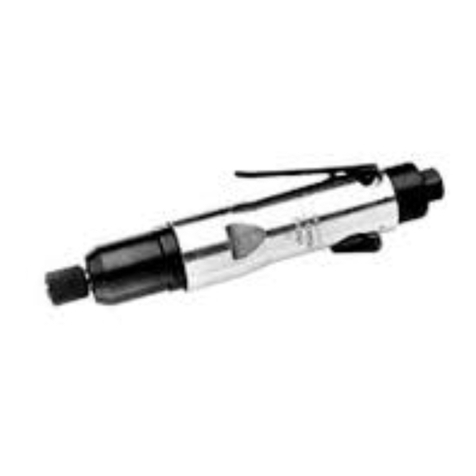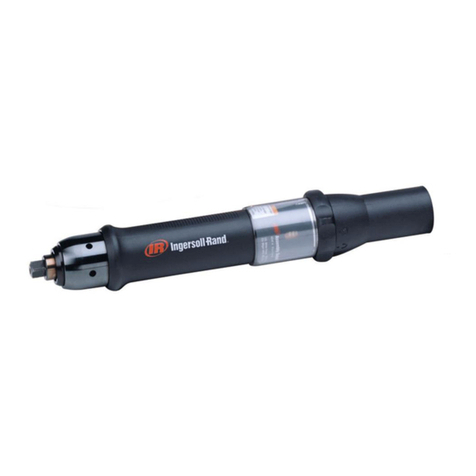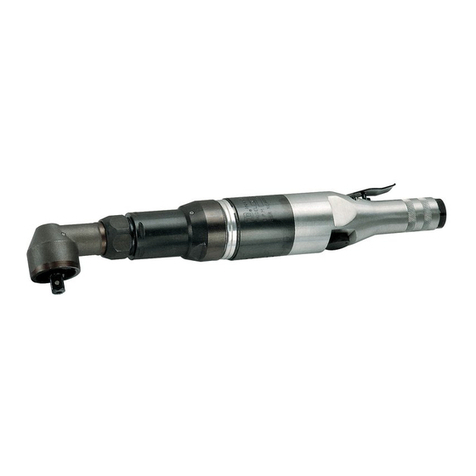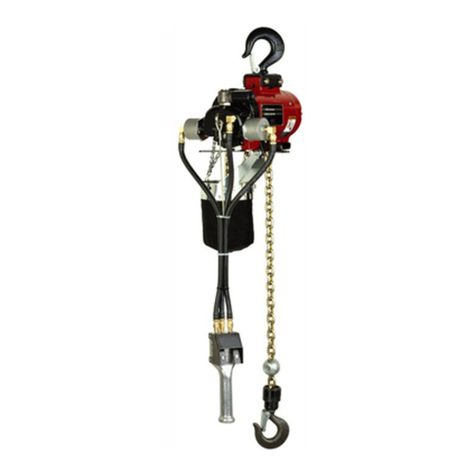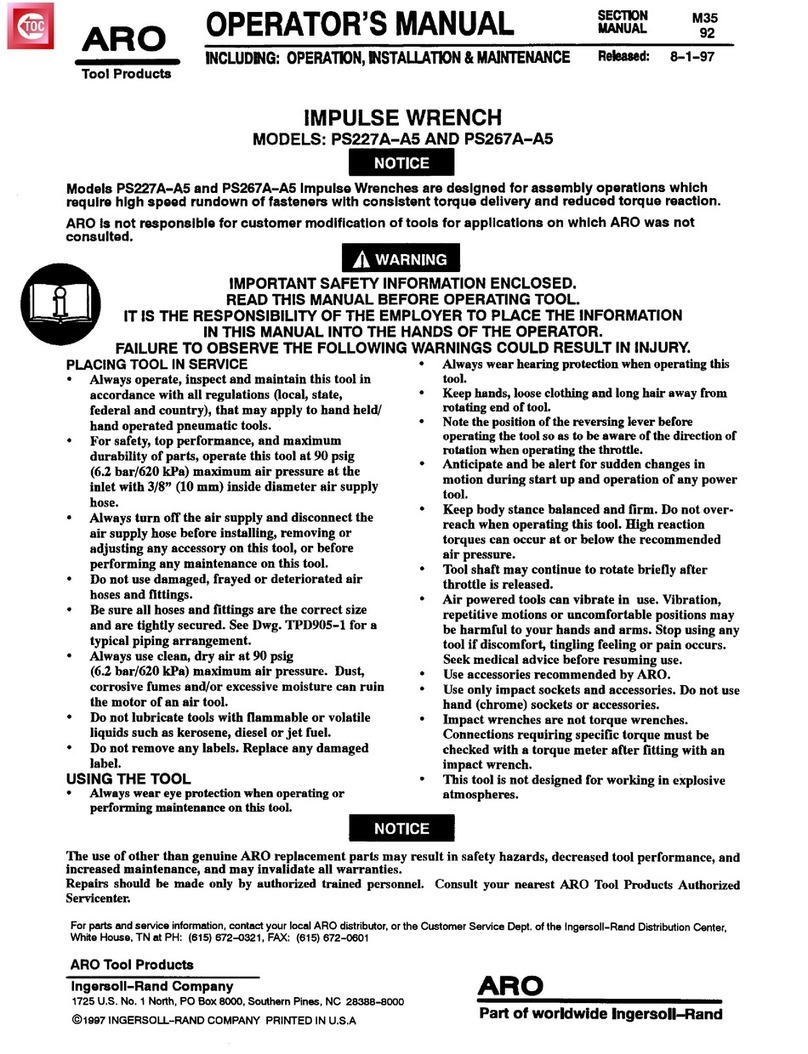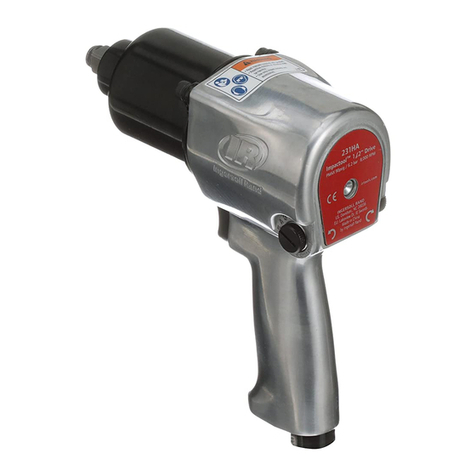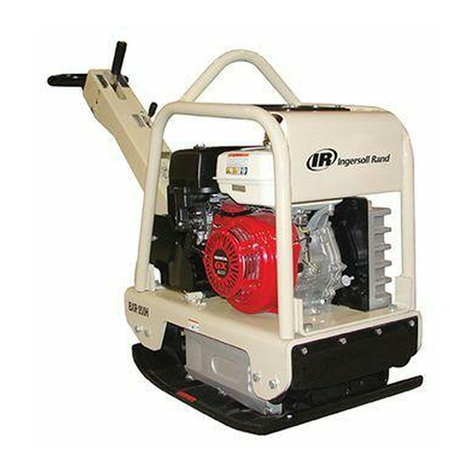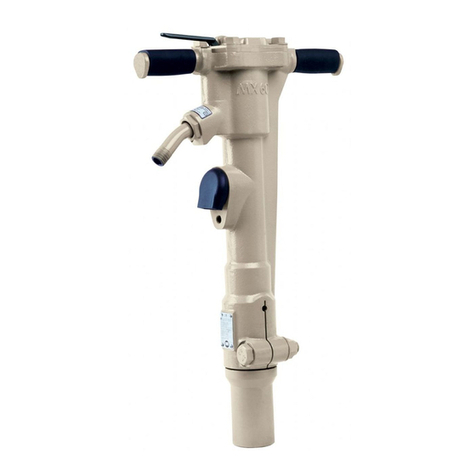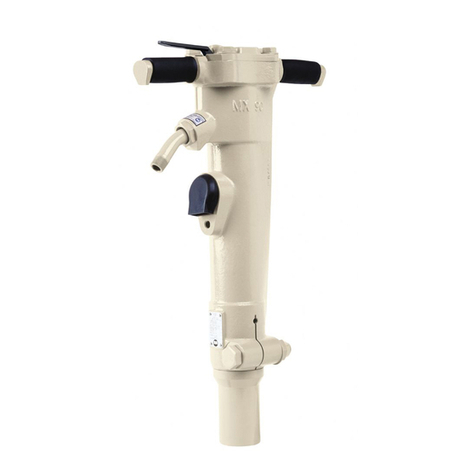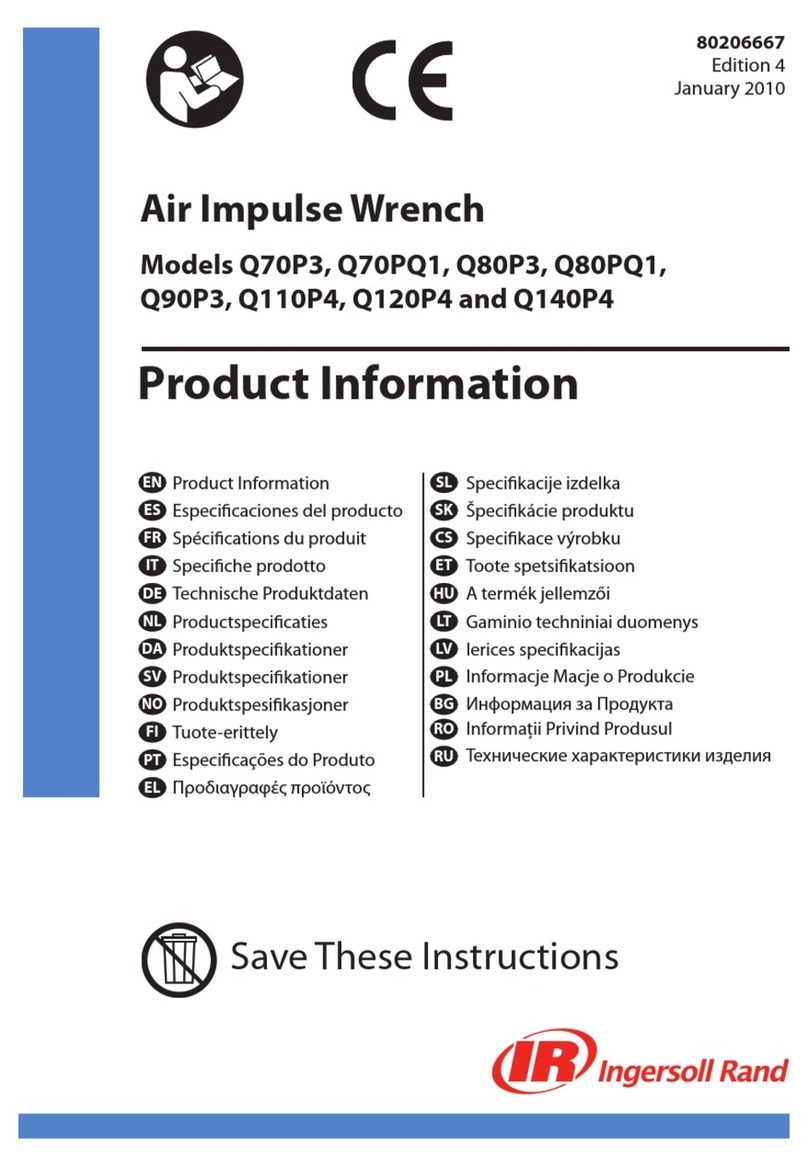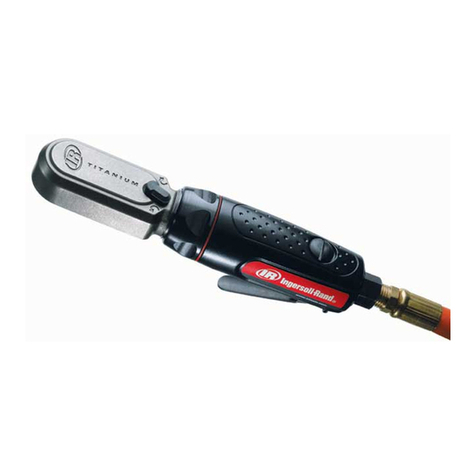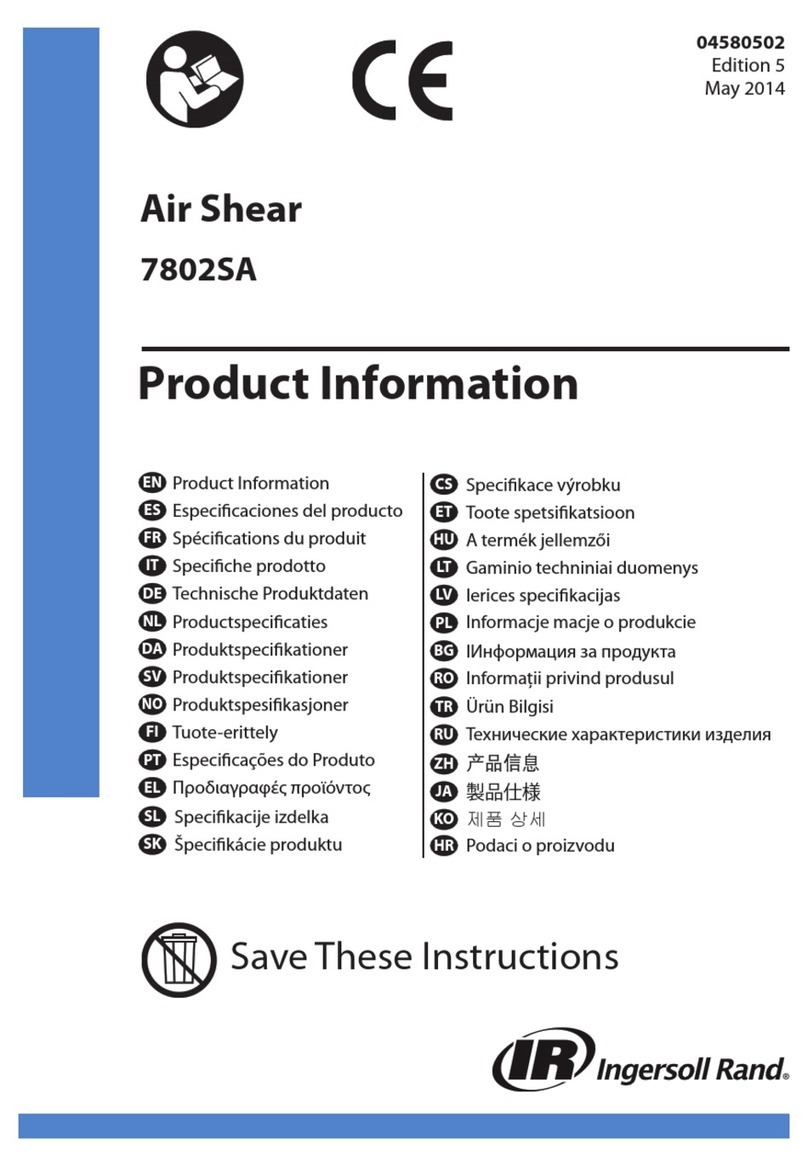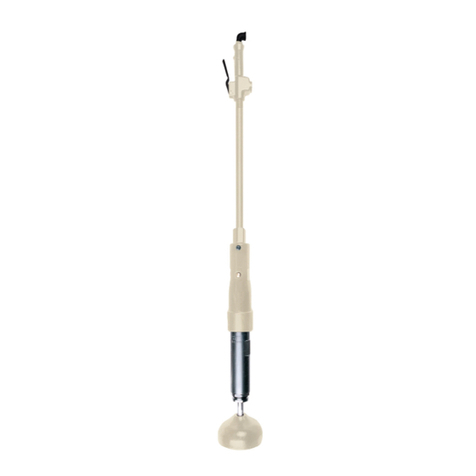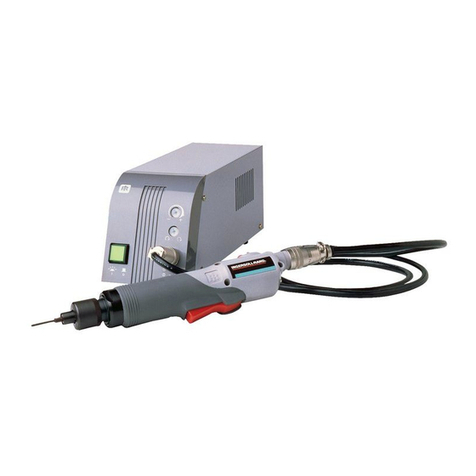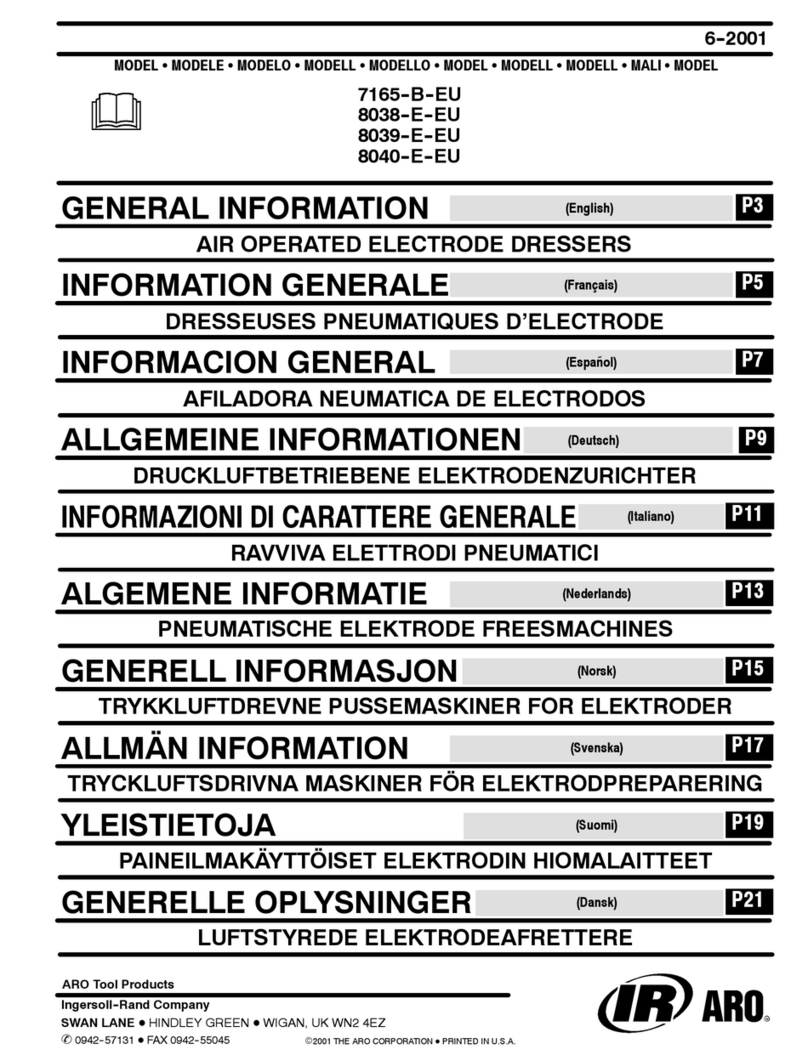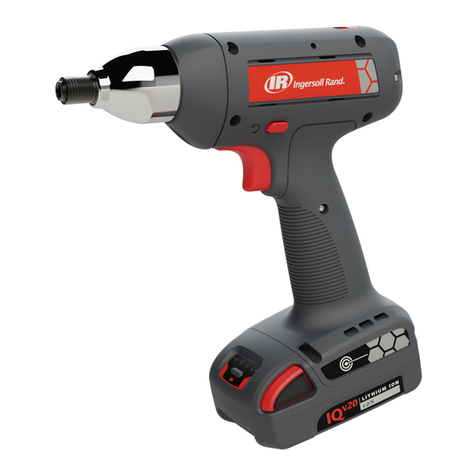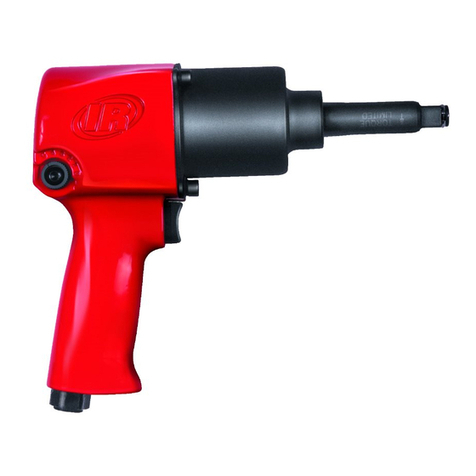
4 47109525_ed1
General Instructions
1. Always press on the inner ring of a ball–type bearing when
installing the bearing on a shaft.
2. Always press on the outer ring of a ball–type bearing when
pressing the bearing into a bearing recess.
3. When grasping a tool or part in a vise, always use leather–covered
or copper–covered vise jaws to protect the surface of the part
and help prevent distortion. This is particularly true of threaded
members and housings.
4. Except for bearings and mechanism parts, always clean every part
and wipe every part with a thin lm of oil before installation.
5. Wipe a thin lm of mechanism uid on all internal mechanism
components before installing them in the mechanism.
6. Apply a lm of o–ring lubricant to every o–ring before
installation.
Assembly of the Motor
1. Position the Exhaust Deector Assembly (18) in the bottom of the
motor housing handle and install the Deector Retaining Pin (19)
to secure it in position.
NOTICE
It may be necessary to slide the Assembly in or out in order to
align the groove in the Assembly with the pin hole.
2. Install the Throttle Rod Seal (3) in the groove on the large hub of
the Throttle Rod (2).
3. Install the Throttle Valve Seal (5) in the groove on the large hub of
the Throttle Valve (4).
4. Slide the Throttle Valve, Valve Seal end rst, onto the Throttle Rod.
5. Secure the Throttle Valve Assembly by installing theThrottle Valve
Retainer (6) in the small groove on theThrottle Rod.
6. Install the Throttle Bushing Seal (8) on the hub end of the Throttle
Bushing (7).
7. Position theThrottle Lever (12) on the Reverse Valve (9) and
secure it by installing the Reverse Lever Retaining Pin (13).
8. Slide the Throttle Bushing Assembly, seal end leading, onto the
shaft of the Throttle Rod.
9. Slide the Reverse Valve, lever end trailing, onto the shaft of the
Throttle Rod and into theThrottle Bushing until the detent hole
in the Valve reaches the end of the Bushing.
10. Install the ReverseValve Detent Spring (11) followed by the
Reverse Valve Detent Ball (10) in the hole in the ReverseValve.
While compressing the Spring with the Ball, continue sliding the
Valve into the Bushing until the Detent Ball enters one of the
detent pockets inside the Bushing.
11. Position the Trigger (14) on the shaft of theThrottle Rod and
secure it by inserting the Trigger Retaining Pin (15) through the
Trigger and shaft.
12. Insert the assembled Trigger into the Motor Housing. Make
certain the widest end of the Trigger is nearest the motor bore
and the notch across the outside of the Throttle Bushing aligns
with hole in the Motor Housing for the Throttle Retaining Pin
(16). Install the Pin making certain it captures and secures the
assembled Trigger.
4. Remove the motor from the vise jaws and remove the Front End
Plate (27), Front End Plate Bearing (29), Cylinder Assembly (25)
and Vanes (26) from the Rotor.
5. Remove the Rear Motor Seal (17) from the Motor Housing.
6. On the table of an arbor press, support the Rear End Plate (21)
with blocks as close to the Rotor as possible and press the Rotor
out of the Rear End Plate and Rear Rotor Bearing (22).
NOTICE
In the following step, do not enlarge or damage the shaft hole in
the End Plate when removing the Bearing.
7. To remove the Rear Rotor Bearing from the Rear End Plate, use a
small drift or pin punch through the central opening of the Rear
End Plate to tap the Bearing out of the End Plate.
(Refer to Dwg. TPD1271)
(Dwg. TPD1271)
8. Using a pin punch, tap the Throttle Retaining Pin (16) and the
Deector Retaining Pin (19) out of the Handle.The Throttle
Retaining Pin is protected by an embossed circular pad of metal.
Insert the pin punch into the middle of the pad to locate the Pin.
(Refer to Dwg. TPD1272).
(Dwg. TPD1272)
9. Grasp the Trigger (14) and pull the assembled throttle out of the
Motor Housing.
10. Using a pin punch and without damaging the Trigger, remove the
Trigger Pin (15).
11. Being careful not to lose the Reverse Valve Detent Ball (10) or
Reverse Valve Detent Spring (11), slide theThrottle Bushing
Assembly (7), Throttle Valve Assembly (4) andThrottle Rod
Assembly (2) o the Reverse Valve (9).
12. Using a pin punch and without damaging the Reverse Lever (12),
remove the Reverse Lever Retaining Pin (13) and separate the
Lever from theValve.
13. Using a thin blade screwdriver, remove theThrottle Valve Retainer
(6) and slide the Throttle Valve Assembly o the shaft of the
Throttle Valve Rod.
14. Grasp the Exhaust Deector Assembly (18) and pull it out of the
Housing.
Assembly

